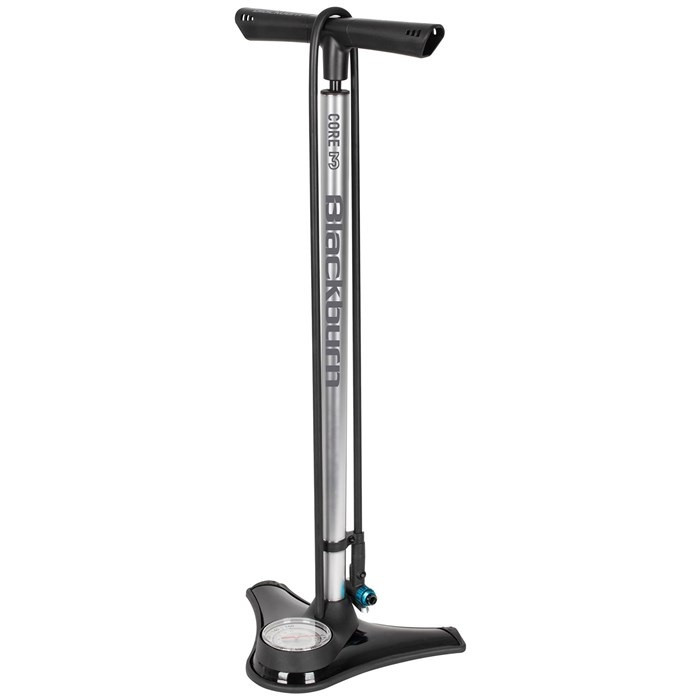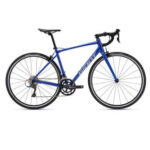If you’re new to the world of cycling, bike components can sometimes feel like a foreign language. Among these, bike valves might seem like a minor detail, but understanding the difference between valve types is crucial for proper tire inflation and maintenance. You’ll primarily encounter two types: Schrader and Presta. Knowing which one your bike uses and the distinctions between them will save you frustration and ensure you’re always ready to ride. Let’s explore the key differences between Schrader and Presta valves to help you confidently identify and use them.
Presta Valves: The Slim and High-Pressure Option
Presta valves are easily recognizable by their slender, elongated shape and the presence of a small lock nut at the tip. Designed specifically for bicycles, Presta valves are less common on other types of inflatables like car tires. They are constructed entirely from metal and feature threading along their entire length.
A key characteristic of Presta valves is their locking mechanism. Instead of a spring, they use a valve locknut to ensure a tight seal. This design makes Presta valves exceptionally reliable for holding high air pressures, often up to 125 psi or even more. This pressure capacity makes them a favorite for performance-oriented cycling.
You’ll typically find Presta valves on higher-performance bikes such as:
- Road bikes, where high tire pressure is crucial for speed and efficiency.
- Mountain bikes, particularly those designed for cross-country and trail riding.
- Gravel bikes, which often require a balance of higher pressure for paved sections and lower pressure for off-road comfort.
Schrader Valves: The Robust and Universal Choice
Schrader valves are wider and generally shorter than their Presta counterparts. Their most defining feature is their universality; they are the same type of valve found on car tires and many other inflatables. Schrader valves have a threaded outer wall for a valve cap and a spring-loaded check valve located in the center. The lower portion of the valve is encased in rubber for durability and sealing against the rim.
The spring-loaded check valve in a Schrader valve is designed for one-way airflow. To inflate a tire with a Schrader valve, you need to press down on the inner pin. This mechanism also allows for easy pressure checking at gas stations or with standard tire pressure gauges.
Schrader valves are commonly found on:
- Budget-friendly mountain bikes, offering durability and ease of use.
- Hybrid bikes, balancing road and হালকা off-road riding.
- City bikes and comfort bikes, prioritizing simplicity and convenience.
Key Differences: Presta vs. Schrader Valves
While both Presta and Schrader valves serve the fundamental purpose of retaining air in your tires, their design and features differ significantly.
Presta valves have additional components:
- Valve core: Modern Presta valves often feature removable valve cores. This is a significant advantage, allowing for replacement if the valve becomes damaged or clogged with tire sealant.
- Valve lockring: This small ring screws onto the valve stem and sits against the rim. It secures the valve, preventing movement and potential damage, especially at higher pressures.
- Locknut (Valve cap): Located at the very tip, the locknut must be unscrewed to open the valve for inflation or deflation. It also helps to protect the valve core.
Schrader valves, in contrast, are simpler in design, consisting of:
- Outer shell: The main body of the valve, threaded for a cap.
- Removable core: Similar to Presta, Schrader valves also have removable cores for replacement.
- Spring-loaded check valve: The core component that controls airflow and maintains pressure.
- Plastic cap: A simple cap to protect the valve from dirt and debris.
Presta vs Schrader: Performance and Convenience
When it comes to performance, Presta valves often hold an edge, particularly for cycling enthusiasts. Their narrower design requires a smaller hole in the rim, potentially contributing to rim strength. Furthermore, the valve design itself becomes more airtight under increasing tire pressure, leading to more reliable pressure retention, especially at high PSI. Presta valves are also slightly lighter, which, while marginal, can be a consideration for performance-focused riders. The availability of valve extenders for Presta valves is another advantage, allowing their use with deep-section aerodynamic rims common on road bikes.
However, Schrader valves offer undeniable convenience, especially for everyday cyclists. Their universal nature means you can inflate your tires at virtually any gas station with an air compressor. Their simple and robust design is also user-friendly, especially for those less familiar with bike maintenance.
Selecting the Right Bike Pump for Both Valve Types
Fortunately, you don’t need separate pumps for Presta and Schrader valves. Modern bike pumps are overwhelmingly designed to be compatible with both valve types. These “dual-head” pumps come in a few common designs:
 Selection of dual-head bicycle pumps compatible with both Presta and Schrader valves, including twin, swappable, and adjustable pump types.
Selection of dual-head bicycle pumps compatible with both Presta and Schrader valves, including twin, swappable, and adjustable pump types.
- Twin-head pumps: These pumps feature two separate nozzles, one specifically for Presta and the other for Schrader valves. You simply choose the appropriate nozzle for your valve type.
- Swappable-head pumps: These pumps have a reversible head that contains the fittings for both valve types within a single unit. Switching between Presta and Schrader typically involves a quick and tool-free adjustment of internal components within the pump head.
- Auto-adjust pumps: The most convenient option, auto-adjust pumps automatically detect the valve type when you attach the pump head. No manual adjustments are needed, making inflation quick and effortless for both Presta and Schrader valves.
For ease of use and versatility, adjustable or swappable dual-head pumps are highly recommended. Whether you’re a seasoned cyclist or just starting out, understanding the difference between Presta and Schrader valves and choosing the right pump will keep you rolling smoothly on every ride.

